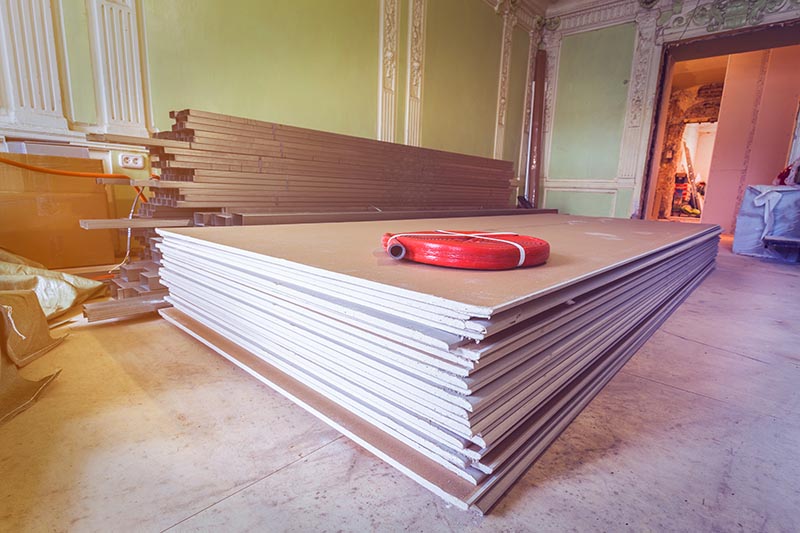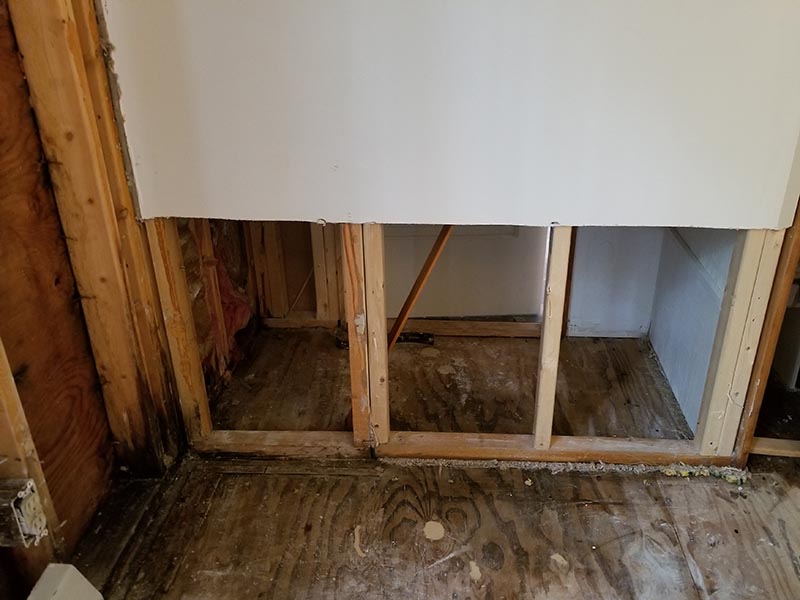Can Drywall Get Wet? What Do I Do If It Does?
-
Pete Ortiz
- Last updated:

Drywall is one of the most common materials that people use for the walls in their homes, but there’s still a great deal of confusion and misinformation out there about this common and versatile material.
One area where misinformation is rife is whether drywall can get wet and what you can do if water does find its way onto drywall. It’s an important topic, hence the reason for this guide.
We walk you through everything that you need to know to care for the drywall in your home and give you an idea of when you should call the professionals for help.
Can Drywall Get Wet?
The short answer to this is that you should do your best to keep water away from drywall. But the longer answer is more nuanced. Most of the time, drywall can handle small amounts of water.
For instance, if you spill a cup of water next to drywall or water from the sink makes its way over to it, that is not a big deal. But if there is a water leak in your home and you don’t get to it right away, it can create problems.

What to Do If Your Drywall Gets Wet
If you’re trying to figure out what to do with wet drywall, it is important to determine exactly how much water is there. If it’s just a small amount of water and it hasn’t been on the drywall for long, you should just be able to dry off the drywall without any further damage being done.
Aim a fan at the drywall to keep the air moving, and dry off excess water with towels. Discoloration is not a huge deal, since you can paint over it, but if you notice other signs of damage, you should replace that section of drywall.
But this is just for small amounts of water on drywall. If there is a large amount of water or the water has been there for a long time, there’s not much that you can do to fix it. You’ll have to replace the affected areas after you fix the source of leaking water.
Signs of Water-Damaged Drywall
There are multiple potential signs of water damage on drywall. The most common is discoloration, but it’s also the least serious sign. As long as there are no other signs of water damage, you can simply repaint the discolored portion after it dries out.
Other signs of water-damaged drywall include sagging, bulging, or mushy-feeling drywall. These are all far more serious indications of drywall damage, and we recommend replacing that drywall.
To get a more accurate understanding of the damage, it’s a good idea to have a professional come and look at your drywall.
Should You Replace Wet Drywall?
Determining whether you should replace wet drywall comes down to the extent of the damage. If the problem is just discoloration, there’s no reason to replace it. Simply dry out the drywall completely and repaint the affected area.
But if you notice any additional damage, it’s best to replace the drywall as soon as possible. Damaged drywall isn’t as durable, and it’s only a matter of time until the damage spreads and the drywall starts to crumble.

Problems With Wet Drywall
You might think that it doesn’t really matter if the drywall is softer than it should be or sags a bit. It’s not like it’s a structural component, right?
While drywall isn’t a structural component, there are still concerns with having water-damaged drywall in your home. The most serious problem is mold.
It doesn’t take long for mold to start growing on a wet or damp surface, and mold has plenty of health concerns. If you notice mold growing on your drywall, we recommend calling a mold removal professional right away.
Also, water-damaged drywall can’t handle most parts of everyday life. Even slight bumps and scrapes can cause the wall to deteriorate, and at that point, the damage can spread to other areas.
By putting off repairs of the affected drywall, there’s a good chance that you’ll need to replace even more drywall later. There’s also the concern that the crumbling drywall will start to damage other parts of your home.
Final Thoughts
Now that you know more about what the drywall in your home can and can’t handle, you can make an informed decision about what to do with any water-damaged drywall in your home.
You also know that it’s best to keep water away from the drywall, but it’s not a huge deal if a little water occasionally splashes its way onto the drywall.
Featured Image Credit: Zakhar Mar, Shutterstock
Contents


